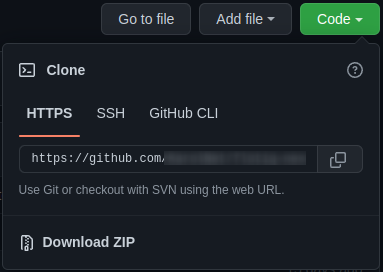Deploy a NextJS to Heroku¶
Flotiq Team prepared a few starters. They use frameworks like gatsby and NextJS. Such starters can be hosted on many popular, often free clouds. This post will guide you through the deployment process for one of the popular free clouds, Heroku. An example will be a starter written in the NextJS framework.
Before start¶
To start, you need an account on Heroku and install Heroku CLI on your PC.
The Heroku CLI is a command line tool to work with the Heroku cloud. The installation process is described on the page:
https://devcenter.heroku.com/articles/heroku-cli#install-the-heroku-cli
After installation is required login to Heroku via CLI:
heroku login
When we log in, the CLI tool is ready to go.
Select and fork starter¶
Select one starter from Flotiq NetJs starter: https://github.com/flotiq
For example, next's steps show deployment starter nextjs blog 1. Fork this repository to your GitHub account.
After a fork, you need to get the starter to your PC. On GitHub, click "Code" and "Download ZIP".
Update packages.json¶
Add -$PORT to command start in packages.json
"scripts": {
"dev": "next dev",
"build": "next build",
"start": "next start -p $PORT",
"lint": "next lint"
},
Create a Heroku app¶
In the project directory, run the command:
heroku create -a flotiq-blog-1
Note
flotiq-blog-1 - is application name,
when command return error about app name is already taken
the name should be changed.
To show list of application, run:
heroku apps
Set remote for your blog:
heroku git:remote -a flotiq-blog-1
Set environment variables¶
heroku config:set FLOTIQ_API_URL=https://api.flotiq.com
heroku config:set FLOTIQ_API_KEY=_FLOTIQ_API_KEY_
heroku config:set NEXT_PUBLIC_GA_ID=_GOOGLE_ANALITICS_ID_
Note
_FLOTIQ_API_KEY_ - Flotiq api key from: https://editor.flotiq.com/api-keys
_GOOGLE_ANALYTICS_ID_ - Google Analytics id
In the case of the Gatsby framework, the environment variable names will be different: https://github.com/flotiq/flotiq-gatsby-blog-1#configuration
Push your code to Heroku¶
Now commit your code changes (packages.json) and push it to Heroku:
git commit -a -m "Heroku deploy"
git push heroku main
Note
main is the name of the branch. For other repositories, this name maybe is different.
After a few minutes, Heroku return URL address for your page:


